
Friday, May 29, 2009
Organizer’s blog digest 2

Wednesday, May 27, 2009
Birds of a feather should be stored together

Tuesday, May 26, 2009
Tips and Tools: Teleseminars
On Friday I participated in a free teleseminar with Jason Womack, a workplace performance coach and former teacher of mine. The teleseminar was about goal setting and I found it to be very informative and inspirational. Free teleseminars are one of the great products of the Internet age—phone calls organized and publicized on the web that don’t cost anything to listen to except for 30-60 minutes of your life and cell phone minutes. (Just make sure that the seminar you have signed up for is really free—some are for pay and can cost hundreds of dollars!)

Teleseminars are sort of like live podcasts that you can interact with your fellow listeners on, by asking questions and commenting during and after the call. People do them for free as a way to publicize their paid content and services. They are offered in a variety of fields, and they can be a great way to audition a person or business if you have been thinking about paying for their services, or a great free way to get a little exposure to a new concept, strategy or field. I try to listen in on business/entrepreneurship and organizing-oriented teleseminars as often as I can.
One of the things brought up in Friday’s seminar was the idea of dedicating a portion of your workspace to being electronics-free and spending multiple work chunks in that space, unplugged, working on whatever project is most important to you. The project might be related to your business, or could be a new idea or a creative project you are trying to finish. Spending time without a phone, computer and PDA at your fingertips is almost an alien concept these days, and trying to actually accomplish work without these modern tools seems impossible. However, a lot of work is done by thinking, drawing, visualizing, writing (by hand), journaling or meditating. Mr. Womack suggests spending five 20-40 minute work chunks on your project in this new workspace and see what happens. Does is work for you? Are you freer to imagine and create? Do you want to make this a permanent part of your practice?
Tips for attending teleseminars:
- Make sure you have the call information and call in a few minutes before the start time
- Make sure you are calling in at the right time—the moderator usually specifies Eastern or Pacific time
- Have lots of paper and a pen, or be in front of a word processing program on your computer so you can take notes
- Listen in with a hands-free ear piece to make note taking more comfortable
- Mute yourself—the call moderator might not mute the listeners, so mute yourself by pressing *6 on your phone so your background noise won’t be heard
- Don’t be afraid to speak up during the question and answer portion—get the most out of the call you can!
Do you listen to teleseminars? What have you learned from them? Share in the comments. Visit Jason Womack's blog and learn about leadership coaching at the Ojai Institute.
Creative Commons Cisco Conference Station photo posted to flickr by Andres Rueda
Thursday, May 21, 2009
What does organization look like?
I think my blog posts are all too long, so here’s a shot at making a short, image-heavy one by showcasing some great photos of people’s organizing tools and solutions from flickr.
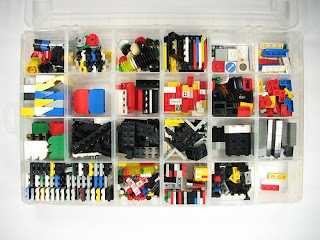
Ultra organized Legos by oskay


Wednesday, May 20, 2009
Tips and Tools: To do list
The to do list is one of the most elementary organizing tools. My family and friends will tell you that I’ve been making them practically since I learned how to write! My brain loves that if I can write something down that I need or want to do or think about later, then that means I don’t have to use up valuable brain power remembering it.
The content of my to do lists has evolved over the years, but I still use the same system: take a piece of scrap paper, get a pen, write stuff down, cross it off when I’m done.
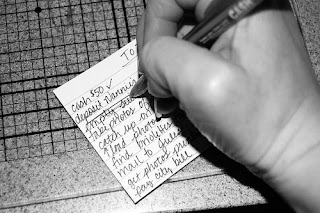
I now also use the Stickies program on my iMac. Stickies are great because they automatically save, so you can’t lose your work if the power goes out, and you don’t have to take the time to press command-s every five minutes or after something changes. I also like the program because you can keep it open all the time and visually see the notes you have on your desktop. You can choose different colors and minimize them or expand them at will.
I keep a revolving list of medium- to long-term things at the top of my Stickies note, then a daily list below. Often I’ll have two or three days on there, so I can plan ahead to do smaller tasks. The electronic to do list makes it easy for me to add repetitive tasks with a simple copy and paste, it also makes it easy to add more information, such as a link to a map I might need to get to an appointment, that I can simply delete later.
When I’m not at my computer, though, I stick to the old standby, a piece of scratch paper or an index card that I can slip in my purse and take with me.
The to do list is free, simple and works.
Creative Commons to do list photo posted to flickr by tracitodd
Monday, May 18, 2009
Using color in organizing systems
There are a gazillion products out there marketed to help get your life in order. A lot of these items, from Post Its and folders to plastic bins and shelving units, come in a variety of colors. When selecting items, it might be tempting to “color code” things. That is, make all of your files having to do with your business hang in blue hanging folders, while your taxes are in red ones and your personal business in green. The idea behind color coding things is that, once you have the system in place, your brain is trained to see the color before the label and you will be able to find things more easily.
For people who really respond to color and patterns, this is true. And it can be fun to add the visual element of color to your space to liven things up. However, the extra step involved in color coordinating an organizational system is usually not worth it for the following reasons:
- Special color products are usually more expensive then the generic version. Why spend twice as much on blue manila folders, when the plain vanilla white ones do the exact same thing?
- Once you get certain colors set up, if you have to buy more products as your system expands, it might be impossible (or too much work) to find the exact color or brand you used the first time, and you’ll end up with two shades of red that don’t exactly match.
- Down the line, it makes it difficult to keep the system consistent, which makes the color coding approach less effective. For instance, if you get new Christmas decorations and you need another green tote box to store them in, but you only have a clear one on hand, are you really going to go out in the middle of the holidays to track down a matching green box, or are you going to have to live with three green boxes and one clear one?
- The plain stuff is simply easier to get a hold of. Everyone sells olive green hanging file folders and plain manila folders with clear tabs.
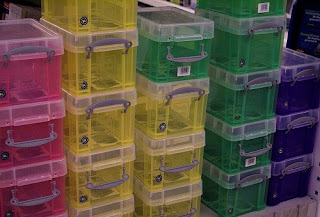
One area where color organization comes in handy is for families with kids (or even just two adults). If each family member chooses a color they want to have as their own, then towels, toothbrushes, and backpacks can all be color coordinated and there is no confusion over what belongs to who.
Creative Commons photo of Really Useful Boxes posted to flickr by Valerie Everett
Thursday, May 14, 2009
Organizer’s blog digest
If you are like me, and spend a good amount of time online during the day, either for work or play, you know that there are a lot of really amazing blogs and resources on the web for almost any topic you can think of. A lot of us use feed readers to organize our RSS subscriptions so that we don’t have to visit each individual blog we’re interested in all the time to see new posts. If that last sentence read like Greek to you, or if you haven’t figured out how to use a feed reader, take a moment and set one up, now. I recommend Google Reader, since pretty much everyone already has a Gmail or Google account and it is very easy to use. Here’s a nifty How To on the subject to help you get started: How to Use Google Reader

Anyway, I made a folder to hold all of the organizing blogs I’ve come across, and I catch up on these posts every day. There is always something new to be learned in the world of organizing, as well as new ways to get inspired. Here’s my own version of a mini feed reader, the best in organizing blogs over the last week or so:
Unclutter is a great blog, full of good advice and an amazing network of readers whose comments are often inspiring and insightful. This week they mention the Butler Bag, a nifty line of ultra-organized handbags that I am a big fan of. Check out their post and the Butler Bag website.
Monica Ricci is a favorite of mine, and this week on her blog she asks readers to tune in to her new Vicki and Jen podcast edition of The Big O, which airs this week. Read her post, and then my post about the same awesome podcast series!
Lorie Marrero at the Clutter Diet Blog always has the best advice and a really clear way of explaining things. This week she wrote about what we can learn about organization from bees among other interesting topics.
Tuesday, May 12, 2009
Rumination: The teeth brushing view of organizing

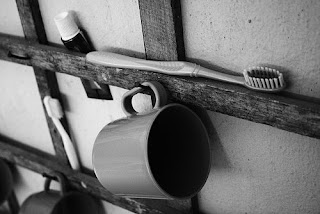
Monday, May 11, 2009
Preventing clutter
“Clutter” is a favorite word of professional organizers. Clutter represents the main thing that separates the organized from the disorganized, and a professional organizer’s main job is often to “de-clutter” you to a point where personal or professional organization is possible.
Clutter usually refers to an excess of things that glom onto every aspect of our lives and hinder us from living life as cleanly, efficiently and as productively as we might want to. These things can be physical objects as well as mental and emotional aspects of our lives. In simplistic terms, clutter is bad, and freeing yourself from clutter promises to release you into a better way of life. Of course, nothing is ever that simple, and clutter is complicated.
While removing existing clutter from your life can be a multi-step commitment, even if you aren’t ready for that step, you can do things starting this minute that will prevent even more clutter from building up in your life.
The basic rule is: don’t let anything into your home unless you know that you will actually use it, that it will have a dedicated place to live and you really like it. This includes purchases you or others in your household make, gifts from others to you, and items you might be temporarily holding onto for someone else. If you make an effort to think about the above criteria before you buy something, you are likely to save some money, but don’t forget the rule holds fast for things that are free as well. Getting something for free as a handout in a store isn’t a license for you to bring it home and have to store it and then finally get rid of it someday, having never looked at it or used it.
Clutter-free gift giving is a whole topic unto itself, but it’s trickier to pull off clutter-free gift getting. It can be done, if you are clear to those who usually get you a present that you either want something consumable, or you give them a specific list of things you want and need. Some people don’t support the idea of a wish list, but if you don’t have a problem identifying a few wanted items, most people don’t mind receiving an indication of what would really be appreciated.
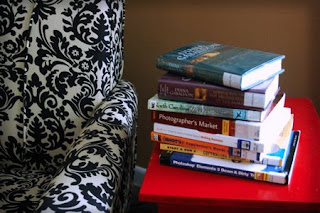
Another way to prevent clutter from entering your life is to make an effort to buy or borrow things that can then be recycled, donated, reused or returned to wherever they came from. For instance, you can get the latest bestseller from your library, and then return it.
I'd love to hear other ideas of how to minimize the amount of clutter coming in the door. Please comment!
Creative Commons photo posted to flickr by essering
Friday, May 8, 2009
Organizing Myth: Organizing takes up a lot of time
Organizing Myth #001: You can’t get organized unless you devote a big chunk of time to it, like a whole day.
Organizing Reality: While I believe that you’ll be able to get into a groove and perhaps accomplish more when working in a long stretch of uninterrupted time, especially on a large project such as a garage or an entire room that needs help, that should by no means be a reason for you to forgo organizing entirely. Don’t use “I don’t have time” as an excuse. You can get a lot done in small bursts, particularly if that suits your working style. 15 minutes or half an hour after work can be enough to make a difference.

Here are some small sized organizing tasks you can do if you only have a few minutes:
- Open your filing cabinet or file box and toss or shred anything outdated.
- Take one shelf of your bookcase and cull out anything you aren’t going to read again. Then put those books in the car to be taken for donation or to your used book store for cash or credit.
- Go to your spices in your kitchen and toss any that are ancient, then put them in alphabetical order.
- Go to your sock drawer and toss any single socks, socks or stockings with holes or runs, tattered underwear, and seasonal socks that you never wear because you forget you have them when the holiday actually does roll around.
- Type your grocery list on the computer and save a template of all the items you buy every time you go to the store. Print out a few and use them as the basis for your weekly list.
Creative Commons photo posted to flickr by stu spivack
Thursday, May 7, 2009
Preparing for an emergency
With a wildfire burning less than 100 miles from here in Santa Barbara, I’m reminded of those things everyone knows they should do to protect themselves in case of emergency, but few of us rarely actually accomplish. We put off doing these sensible things, since a part of us always hopes we won’t need them because there will never be an emergency. Not to be clichéd, but the old saw “hope for the best, but prepare for the worst” is actually pretty good advice. Obviously, we all hope there won’t ever be an earthquake, flood or fire that affects us or our loved ones, but no one can ever know what the future holds.
So here’s a short list of items that you really SHOULD take care of, not someday, but now. If you do one a week for the next five weeks, you’ll be done, and except for some minor maintenance, you’ll have the peace of mind that comes from knowing you are prepared for something less than pleasant to happen.

- Okay, let’s start with an easy one--smoke detectors. Take a moment and make sure you have the proper number of smoke detectors in your home and that they are in working order. Here’s some great information on smoke alarms from the U.S. Fire Administration: http://www.usfa.dhs.gov/downloads/pyfff/smkalarm.html
- Next, make sure that all of your vital documents (deeds, birth certificates, insurance policies, etc.) are stored somewhere safe, such as off site at a safe deposit box or in your home in a fire safe box. Here’s a good guideline of what to keep where: http://www.ag.ndsu.edu/news/newsreleases/2009/march-26-2009/keep-valuable-documents-safe Along these same lines, I cannot stress enough how important it is to back up your digital files as well, such as photos, videos and documents you may be keeping on a home computer. If you don’t already have a backup system in place, such as an external hard-drive, I highly recommend you create one immediately. If you can, make a second backup that you can store off site, or use online storage, just in case your external hard-drive gets destroyed in an emergency.
- For insurance purposes, it is smart to read your homeowner’s or renter’s insurance policy and make sure you understand it. If you have valuables, such as art or electronics, that may not be covered, consider extending your insurance. Once you understand what you are insured for, make an inventory of all the items in your home. A visual inventory, either photos or video of the items, is a good idea. You may also want to keep receipts and make a spreadsheet or other database of the items in question with information like when you acquired the object and what you paid for it. None of this information will do you any good if it is destroyed in an emergency, so make multiple copies and keep them with your documents off site, and give a copy to a friend or relative to hang on to. Consider also backing up the information online via web storage. Remember that when you make an improvement to your home, or if you make additional major purchases, you’ll need to update your records accordingly.
- Next, consider what area you live in and what the most likely disasters to affect you might be. I live in Southern California, and earthquakes are always at the forefront of my mind. Fire can affect everyone, either wildfires or residential fires, and flooding, tornadoes, hurricanes, frost and heat take their toll on thousands of people every year. Make sure you do research into the disasters likely to affect your part of the world and plan accordingly. FEMA has some great information on its website about different hazards.
- The last thing I want to mention is in some ways the hardest: estate planning, which basically means what you want to have happen to your stuff when you die. This refers to your will, trusts, dispersal of your money and property and all of that legal stuff. It can also refer to your wishes regarding your body and funeral. It is never too early to start thinking about these things. Especially if you have children or have had a life change since your last will such as a marriage or divorce, you want to make sure that your wishes are backed up by legal documents. This is a pretty huge topic, so don’t be afraid to ask for professional help. Making sure your wishes are known and recorded will ensure you peace of mind and also be a burden lifted from your spouse, children or family upon your death. Please, make sure your affairs are in order as soon as possible. Here are a couple of good online resources for estate planning: SmartMoney and CNN Money
So that’s a lot of preparation for something that may never happen, but it is really important to do. If it is difficult for you to prepare for something unpleasant, think about how much safer and easier it will be for your family in the case of emergency if you take a few steps right now. Get help, from a family member or friend, if you don’t feel like doing it alone, or hire a professional to make a home inventory and get a lawyer to help you with estate planning. Good luck!
Creative Commons photo posted to flickr by 91RS
Tuesday, May 5, 2009
Working Clean
To me, working clean means keeping your workspace in an ordered condition as an integral part of the motions of your work, allowing you to work more quickly and efficiently. In David Allen’s Getting Things Done, he writes about the Productive State, “a condition of working, doing, and being in which the mind is clear and constructive things are happening.” Working clean relates directly to keeping one’s mind clear. It isn’t enough to have your desk space physically clear of paper, trash and knick knacks, your mind must be clear and free of errant thoughts in order to be productive on your immediate task. Allen writes “clearing the mind and being flexible are key.” I’d argue that working clean, when employed as your default mode, makes flexibility possible. A working clean workspace refers to a dynamic and fluid space from which you are able to adapt and react to things as they come up.
This concept is adapted from something that has stayed with me for years since I read Anthony Bourdain’s fascinating Kitchen Confidential. In it, he talks about how the best line cooks are the ones that work clean, keeping their station free from food drips and spills (and sometimes blood) and bare of anything except what they need in that moment to get the dish made and out to the table as soon as possible. For them, it is a necessity when juggling hundreds of meals in a few hours, and to keep them safe(r) from accidents.

Bourdain also talks about a chef’s mise en place, and how the specific layout of tools and ingredients is specific to each chef. The repetition of a kitchen requires a line cook to rely on his mise en place. Anybody who works in the same space day in and day out, whether it be at a computer, a cash wrap, a classroom or a car has their own mise en place whether they realize it or not. In my brief waitressing career I felt naked if I went out to wait tables without three pens, the day’s specials written in my server’s shorthand inside my order book, and a clean cloth placed in the same pockets of my apron every time.
Think about working clean and what that means for you. Would you take out only what materials you are working on in a given moment and put them away when you move on to something else? Would you want a perfectly clear space so you could project your ideas and creativity freely onto it? Would you want your computer desktop clear of all icons except what you were working on that day? Try incorporating it into you daily routine and see what happens.

